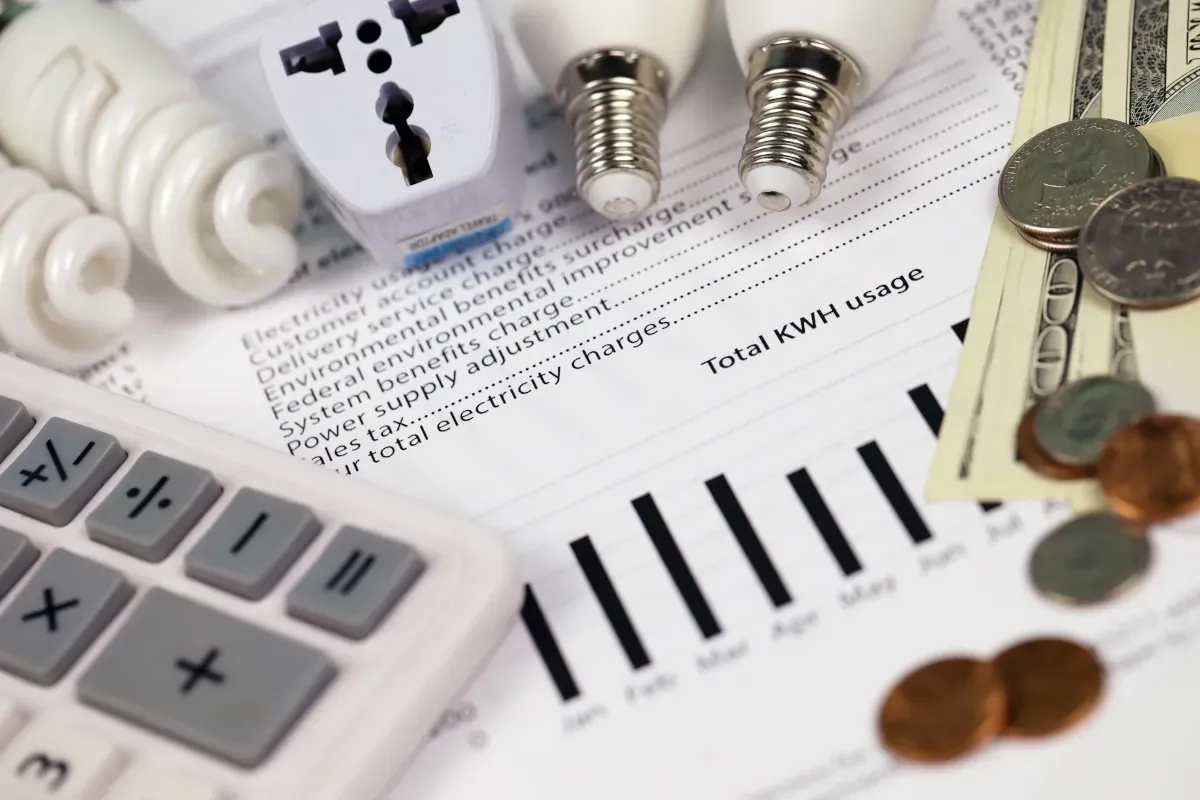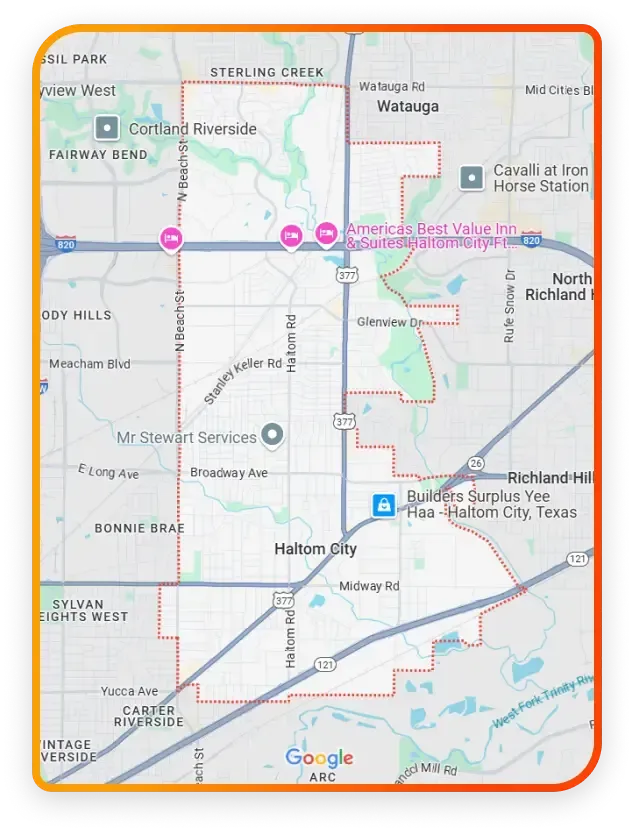
Allen Forman • May 23, 2025
Are your summer electric bills too high because of your air conditioner? You're not alone. The best ways to lower air conditioning costs mix easy home fixes, smart habits, and proper care. These tips will help you stay cool without emptying your wallet.
Understanding Your AC Energy Usage
Your air conditioner can eat up to 50% of your summer energy bills. That's a big chunk of money! Air conditioners work by taking heat and moisture out of your home's air.
The gap between your thermostat setting and the outdoor temperature affects your bill. Each degree cooler can hike your energy use by 3-5%. Small changes can save you real money.
Many homes waste energy by cooling rooms no one is using. They also keep temperatures too low. Finding these waste points helps you cut costs where it matters most.
Simple Adjustments to Lower Cooling Costs
Change your thermostat setting to save money right away. Keep it at 78°F when you're home and awake. Every degree cooler will cost you 3-5% more on your bill.
Use ceiling fans to make rooms feel 4-6 degrees cooler. Just remember to turn the fans off when you leave the room. Fans cool people, not empty rooms.
Try these easy daily habits:
- Close blinds when the sun is brightest, especially on south and west windows.
- Run hot appliances (ovens, dryers) in the evening when it's cooler.
- Keep the inside doors open so cool air can flow better.
- Try a dehumidifier in damp areas - drier air feels cooler.
Home Improvements for Better Efficiency
Good insulation keeps hot air out and cool air in. Check your attic, walls, and floors for gaps or thin spots. Adding insulation can cut cooling costs by up to 15%.
Seal leaks around windows, doors, and air ducts. Even small cracks let your cool air escape. Use caulk, weatherstripping, and door sweeps to fix these leaks.
Make your windows work better:
- Put reflective film on windows to block heat
- Hang blackout curtains or cellular shades
- Get ENERGY STAR windows if you can afford them
Help your home stay naturally cooler:
- Add attic vents to let hot air escape
- Open windows on opposite sides during cool mornings
- Plant trees for shade (takes time, but works great)
Smart Technology Solutions
Smart thermostats are one of the best ways to lower air conditioning costs. These gadgets learn when you're home and what temperatures you like. They make changes on their own to save you money. Most cut cooling bills by 10-15%.
Smart thermostats can:
- Change the temperature automatically when you leave home
- Let you control settings from your phone
- Show reports on your energy use
- Alert you when maintenance is needed
Zone cooling lets you cool only the rooms you're using. You can add dampers to your ducts or use mini-split ACs to cool just certain areas.
Smart ceiling fans can team up with your AC. They change speeds based on the room's temperature and if people are there.
Maintenance Tips to Maximize Efficiency
Taking care of your AC keeps it running well. A well-maintained AC can use 20% less energy than one that's neglected.
Do these simple maintenance tasks yourself:
- Change air filters every 1-3 months in summer
- Remove leaves and dirt from outdoor units
- Wipe dust from vents inside your home
- Make sure nothing blocks airflow around units
Have a pro check your system once a year to:
- Clean the cooling coils
- Check coolant levels
- Look for duct leaks
- Make sure the settings are correct
- Check the electrical parts
Fix small problems right away. Even minor issues can make your AC work harder and use more power.
Alternative Cooling Methods
Help your AC by using other cooling methods too. Evaporative coolers (also called swamp coolers) work great in dry areas and use way less power than regular AC.
Create natural air flow by:
- Opening windows in cool mornings and nights
- Putting box fans in windows to pull in cool air
- Opening windows on opposite sides of your home
Change your habits to need less AC:
- Spend more time on your home's lower floors
- Enjoy your patio or porch in the evenings
- Make sandwiches or salads instead of using the oven
When to Consider an AC Upgrade
If your AC is over 10 years old, a new one could save you lots of money. New ENERGY STAR units use 20-40% less energy than older models.
Figure out how much you might save:
- Find your AC's SEER rating (it's on a sticker on the outdoor unit)
- Look at new units with SEER 16 or higher
- Calculate savings based on your typical summer bills
When getting a new system, think about:
- High-efficiency central air systems
- Mini-split systems that cool just certain rooms
- Heat pumps that both heat and cool your home
Check for rebates and tax breaks on energy-saving upgrades. These can help pay for part of your new system.
Common AC Mistakes That Cost You Money
Many homeowners make mistakes that drive up their cooling bills without realizing it. Avoiding these errors is one of the best ways to lower air conditioning costs.
Setting the temperature too low wastes energy and money. Your AC works the same way whether you set it at 72°F or 78°F. It doesn't cool faster at lower settings – it just runs longer.
Closing vents in unused rooms can actually hurt efficiency. Your AC system is designed to cool a specific space. Closing vents creates pressure imbalances that make your system work harder.
Using your AC when nobody's home is like throwing money away. Program your thermostat or turn the temperature up when you leave. Even a few hours of reduced cooling adds up to real savings.
Ignoring leaky ducts is a costly mistake. Up to 30% of cooled air can escape through duct leaks before reaching your rooms. Have a pro check your ducts, especially if some rooms never seem cool enough.
Placing heat-producing items near your thermostat tricks it into running longer. Keep lamps, TVs, and other electronics away from your thermostat for more accurate temperature readings.
Cost-Effective Summer Cooling Schedule
Creating a cooling schedule is a smart way to lower air conditioning costs while keeping your home comfortable when it matters most.
During morning hours (5-9 AM), open windows to let in cool air if the outside temperature is below 77°F. Close windows and blinds before the day heats up to trap cool air inside.
For daytime hours when you're away (9 AM-5 PM):
- Set your thermostat to 85°F if no one is home
- Keep all blinds and curtains closed, especially on the sunny side
- Make sure the ceiling fans are turned off in empty rooms
- Close interior doors to unused rooms
During peak heat hours (3-7 PM):
- Lower the temperature to 78°F about 30 minutes before returning home
- Use ceiling fans only in occupied rooms
- Avoid using heat-generating appliances
- Consider using a cold compress or cool shower instead of lowering the AC
For evening hours (7-10 PM):
- Keep the temperature at 78°F while active
- Open windows if the outside temperature drops below the inside temperature
- Use ceiling fans to create cooling breezes
- Run large appliances like dishwashers after 9 PM, when electricity may be cheaper
During sleeping hours (10 PM-5 AM):
- Set the temperature to 80°F for sleeping (studies show this is ideal for most people)
- Use light, breathable bedding
- Run ceiling fans in bedrooms for cooling comfort
- Consider a programmable thermostat that automatically raises the temperature toward morning
Understanding SEER Ratings
When looking at ACs, you'll see a SEER number. SEER stands for Seasonal Energy Efficiency Ratio. This rating is one of the keys to finding the best ways to lower air conditioning costs in the long run.
Think of SEER like the MPG (miles per gallon) for your car. The higher the number, the less energy your AC uses to cool your home. Older AC units might have SEER ratings of 8-10, while newer models start at 13-14 and can go up to 25+.
Each point increase in SEER rating can cut your cooling costs by about 7-8%. For example, upgrading from a SEER 10 unit to a SEER 16 unit could save you 30-40% on cooling bills!
Here's a simple guide to SEER ratings:
- SEER 13-14: Minimum standard for new systems (entry-level efficiency)
- SEER 15-16: Good efficiency with reasonable upfront costs
- SEER 17-19: High efficiency with better savings over time
- SEER 20+: Maximum efficiency but with higher purchase costs
The best SEER rating for your home depends on your climate and how much you use your AC. In hot climates where AC runs most of the year, a higher SEER rating pays off faster. In mild climates with short summers, a mid-range SEER might make more financial sense.
Remember that SEER ratings only tell part of the story. Proper sizing, installation, and maintenance of your AC system matter just as much for energy efficiency. Always have a professional help you choose the right-sized unit for your home.
Cooling Specific Areas of Your Home
Not all spaces in your home need the same level of cooling. Learning to cool specific areas can be one of the best ways to lower air conditioning costs.
Focus on bedrooms during sleeping hours. Close vents in less-used spaces and redirect that cool air to where you need it most. Just don't close more than 20% of your vents, as that can strain your system.
Cool your home from the top down if you have multiple floors. Hot air rises, so upper floors tend to stay warmer. Focus cooling efforts on upper levels and let the cooler air naturally fall to lower floors.
Create cooling zones if possible. If you have multiple AC units or a zoned system, set different temperatures for different areas. Keep sleeping and living areas comfortable while letting less-used spaces stay warmer.
Use portable AC units wisely in problem areas. Some rooms may stay hot despite your best efforts. A small portable AC can target these spots without cooling your entire home.
Consider these cooling priorities:
- Highest priority: Bedrooms during sleeping hours
- Medium priority: Living spaces during active hours
- Lowest priority: Rarely used rooms, storage areas, and transitional spaces
Remember that cooling unused spaces wastes money. If you have guest rooms, storage areas, or other spaces that aren't used daily, keep their vents closed (but never more than 20% of all vents) and doors shut.
Frequently Asked Questions
What temperature should I set my thermostat to save money? Set your thermostat to 78°F when you're home for the best savings while staying comfortable. When you're away, let the temperature go up to 85°F.
Do ceiling fans really help cut AC costs? Yes! Ceiling fans make you feel 4-6 degrees cooler thanks to the breeze they create. This lets you set your thermostat higher while still feeling good. Just turn the fans off when you leave the room.
How much will a smart thermostat save me? Most homes save 10-15% on cooling bills after getting a smart thermostat. Your exact savings depend on your habits and your AC system.
Is it cheaper to keep my AC at the same temperature all day? No. It's better to let your home warm up when nobody's there. This uses less energy than keeping it cool all day long.
How often should my AC get professional service? Have a pro check your AC once a year, best in spring before it gets hot. This keeps your system running well when you need it most.
Don't let summer AC bills break your budget. Using these best ways to lower air conditioning costs lets you stay cool without spending too much. Call Leak Wranglers today for an AC tune-up or to learn about more efficient cooling options. Our team can help find the best ways to save in your home and keep your system running great all summer.



